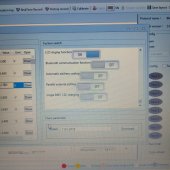Mariner62
New Member
- Joined
- Dec 29, 2020
- Messages
- 84
What has been the lowest SOC over the months you have been running?It's been running for a few months charging at night up to 100%. That's why I want to check settings to make sure nothing is wrong or incorrect
Did you previously go down much lower or has this 24% lower limit alarm been a regular thing since commissioning?
As @brum mentioned, you need a proper full charge and top balance to happen.
I would suggest that you run the logging tool in the SEPLOS software and capture the data for the hours it takes to charge up completely, then create some graphs from that to see for sure what is happening.




